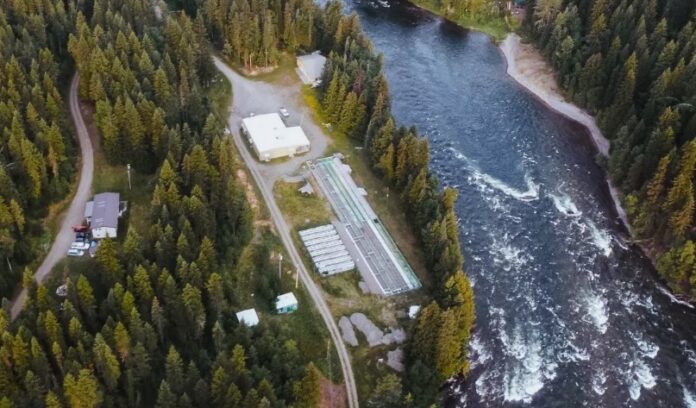A research team has secured 5 million dollars to upgrade the infrastructure and do research at the Quesnel River Research Centre in Likely.
It is one of the largest grants in University of Northern BC history and the money comes from the BC Restoration and Innovation Fund, which represents both provincial and federal funding.
Doctor Ellen Petticrew, a Professor at the University of Northern BC who works out of the Centre, says the grant will be used to put in specialized labs in a new building and to upgrade the hatchery.
“Initially when we took over the field station, we took over an old DFO hatchery in the early 2,000’s so it wasn’t really purposed for the range of research that could go on in the watershed, so we have been modifying it over the years. But this new building allows us to put in specialized labs which will we’re going to be focusing on for the short term anyway, ecotoxicology, specifically on fish and different stages of the salmon life cycle, and as well we have a larger meeting room/ classroom which will allow us to have both workshops, training as well as our public meetings there.”
Petticrew says it will increase the opportunity for education, outreach and teaching and research.
She says they will also upgrade components of the hatchery infrastructure that is helping to support their research.
“Problems with the Upper Fraser stocks over the last few years, especially since Big Bar, and maybe now with the new problem in the Chilcotin, the stocks are in danger. So there is a program there associated with the Upper Fraser conservation group to support Chinook salmon growth from a number of different stocks in the watershed.”
On the research side, she says it will be used to study the impact of drought, flooding and wildfires on salmon habitat.
When it comes to wildfires, Petticrew says it is reasonable that wildfires could have a negative impact on salmon stocks.
“I think it is reasonable that they have an impact and it can be in a couple of different directions and probably more, one being that once you have a wildfire and remove the vegetation you expose the ash in the soil to precipitation, to wind, which makes that material available to be moved into the river system which then can clog the gravels. So just the physical clogging of the gravels can be problematic at the time when the redds (spawning bed) are being dug and eggs are trying to survive.”
Doctor Petticrew says the other thing is what contaminants are being carried on that material, such as PAH’s (Polycyclic aromatic Hydrocarbons).
She says it is both the loss of vegetation and the loss of nutrients going into the steam that would support fish, as well as contaminants.
Petticrew says they have been getting ready to do that research.
“We’ve been collecting the ash and the soils from burnt areas in our watershed to be using in this. But to prepare for those ecotoxicology experiments one of the things we need to do is to have the eggs hatching at the right temperatures and exposed to the right temperatures, so we are building a series of water tables which allow us to modify the experimental temperatures to simulate what’s really going on in the gravels. So in this past year since 2023 we’ve been recording the inter gravel temperatures in some of the big natal (stream of berth) streams in the Quesnel water shed, the Mckinley Creek, Horsefly Creek, Quesnel River itself, and then looking at the inter gravel temperatures and the water temperatures.”
Petticrew says they are modified due to climate change, especially with warming summers, etc.”
She says they will be holding their annual open house in October and progress on their research to date may be available at that time.
- Advertisement -








